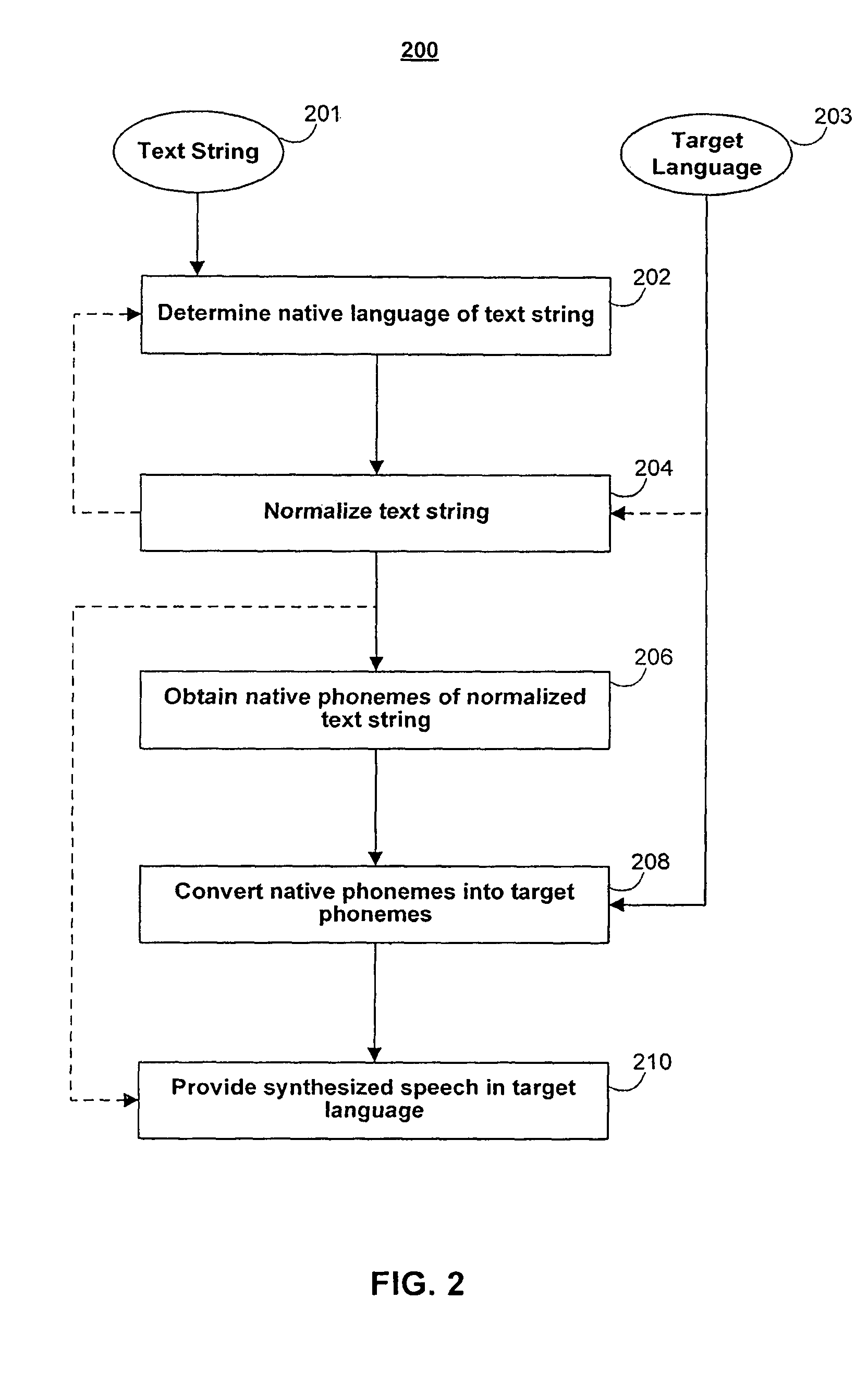Systems and methods for text normalization for text to speech synthesis
a text and speech technology, applied in the field of text normalization and speech synthesis systems and methods, can solve the problems of inability to synthesize such natural-sounding high-quality speech, inability to use existing portable electronic devices, and insufficient resources for dedicated man-hours, etc., and achieve the effect of easy conversion into human-sounding speech
- Summary
- Abstract
- Description
- Claims
- Application Information
AI Technical Summary
Benefits of technology
Problems solved by technology
Method used
Image
Examples
Embodiment Construction
[0027]The invention relates to systems and methods for providing speech content that identifies a media asset through speech synthesis. The media asset may be an audio item such a music file, and the speech content may be an audio file that is combined with the media asset and presented before or together with the media asset during playback. The speech content may be generated by extracting metadata associated with and identifying the media asset, and by converting it into speech using sophisticated text-to-speech algorithms that are described below.
[0028]Speech content may be provided by user interaction with an on-line media store where media assets can be browsed, searched, purchased and / or acquired via a computer network. Alternatively, the media assets may be obtained via other sources, such as local copying of a media asset, such as a CD or DVD, a live recording to local memory, a user composition, shared media assets from other sources, radio recordings, or other media asset...
PUM
 Login to View More
Login to View More Abstract
Description
Claims
Application Information
 Login to View More
Login to View More - R&D
- Intellectual Property
- Life Sciences
- Materials
- Tech Scout
- Unparalleled Data Quality
- Higher Quality Content
- 60% Fewer Hallucinations
Browse by: Latest US Patents, China's latest patents, Technical Efficacy Thesaurus, Application Domain, Technology Topic, Popular Technical Reports.
© 2025 PatSnap. All rights reserved.Legal|Privacy policy|Modern Slavery Act Transparency Statement|Sitemap|About US| Contact US: help@patsnap.com



